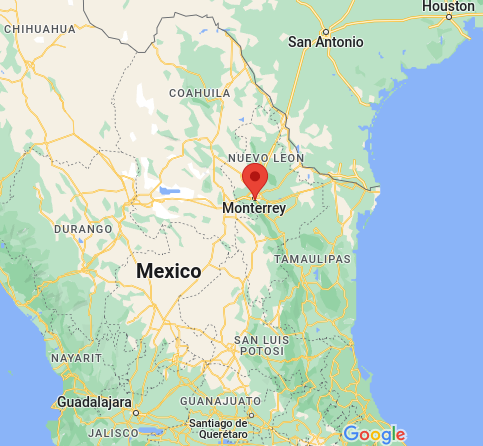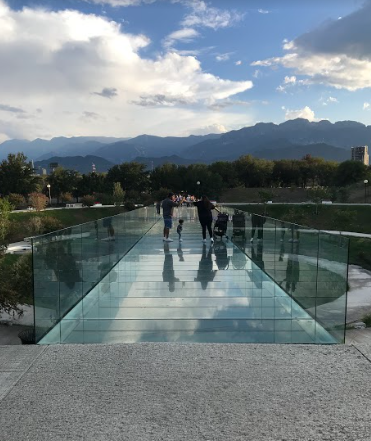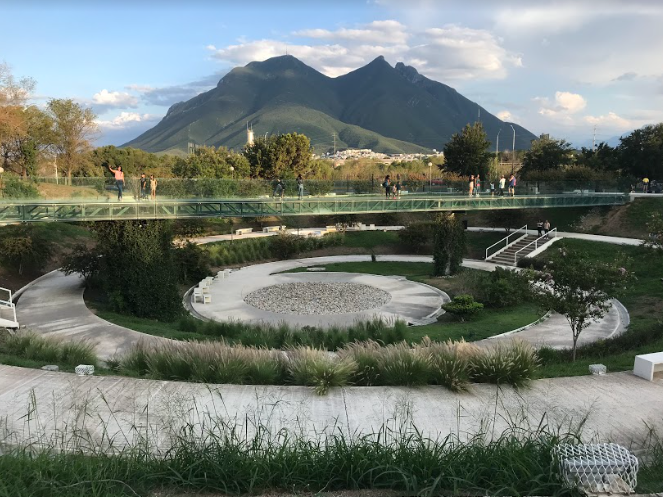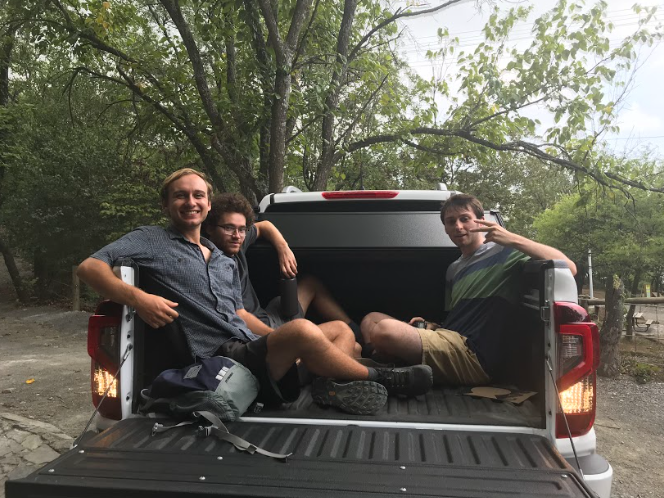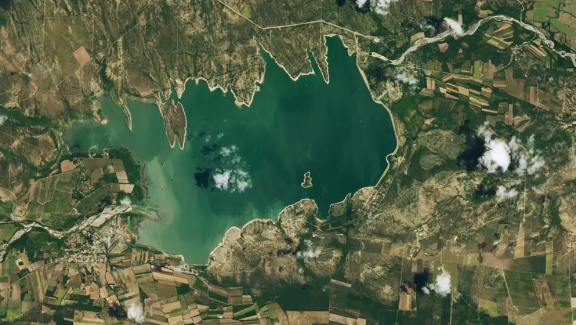Background:
Parque Nacional Natural Tayrona, casually known as Tayrona, is a popular tourist attraction on the Atlantic coast of Colombia. So after arriving in the nearby coastal city of Barranquilla, we spent 2 days in Tayrona for an easy start to our Colombian adventure.
About Tayrona:
Tayrona, is the crown jewel of Colombia’s national park system. The park protects coral reefs, spectacular beaches, and a coastal forest.
Me on one of the many beaches in Tayrona.

There are also several indigenous communities inside the park. Tourists are not allowed to visit them, but many people from the communities work in the park as vendors.
Getting There:
To get there, we took a bus from Santa Marta to the park entrance.
What We Did:
We entered the park on September 16, 2022 and left on the 17th. To get there, we took a bus from Santa Marta to the entrance. At the entrance, we bought park passes and made reservations to spend the night in hammocks, then took a shuttle down a dirt road into the park. From the end of the road was an hour and a half hike to the campsite. The hike was surprisingly difficult, with several rocky ascents, large sections of loose sand and, of course, intense heat and humidity. For those who found the hike too difficult, the park had horses available to take people to their campsite and to popular areas within the park. But it was not necessary for us, and eventually we made it to the campground.
Our campground in Tayrona.

The campground was located in a clearing in the forest and was quite nice. In addition to hammocks, it had tents and even cabins with electricity available for people who like to travel luxuriously. It also had showers, a restaurant, a kitchen, a general store, and a luggage storage area. Since Tayrona is warm all year, most of the buildings were open-air shelters with roofs, but they were still quite comfortable. After putting our backpacks in the luggage storage area, we hiked to the beach.
The beaches were full of people swimming and sunbathing. There were also restaurants and vendors selling fruits, both along the trails and on the beaches. On the beaches, there were places to rent snorkel gear to see the reefs and we even saw a dive boat full of SCUBA divers. While swimming in the water, we met people from all around the world, with most people coming from other parts of Colombia, followed by tourists from Europe.
While drying out on the beach, Gabe and I talked to one family from Bogotá for a while. They were two parents and their college-aged son. They were on vacation in Tayrona and had approached us because they recognized our United States accents and the son, David, had just graduated from a university in the U.S. He studied agricultural engineering, so we talked about plants for a bit, then they gave us a long list of places we needed to visit in Bogotá. After about 30 minutes, we parted ways without exchanging contact information.
We spent a few more hours walking from beach to beach, then headed back to our campground once it started to get dark. The restaurant in our campground was cooking a big meal of pasta and vegetables for the campground, but Gabe and I opted to save some money and cook some ramen and vegetables we brought in the camp’s kitchen. They took a lot longer to cook than expected on the tiny alcohol stove I brought, so as soon as we were finished eating we went to sleep in our hammocks.
The next day, we ate breakfast at the restaurant, spent a few more hours on the beach, then hiked back the way we came and took a shuttle out of the park. From there, it was easy to catch a bus back to Santa Marta.
Lessons from Tayrona:
In addition to the spectacular landscapes in Tayrona, it really shines because of its infrastructure. Tayrona, like most national parks in the United States, is not a wilderness escape where you can expect to go days without seeing other people. Rather, it is a place where many people from around the world go to appreciate its beauty in the company of others. While like many national parks in the United States, Tayrona often sees thousands of visitors per day, it remains both comfortable and accessible. This is due to its transportation infrastructure and the type of accommodation offered, and I think national parks in the United States could learn a few lessons from Tayrona.
In the United States, I have waited in traffic for hours to enter a national park, only to struggle to find parking upon making it inside. Tayrona circumvents the problem entirely by having no roads in the park, nor does there seem to be any parking near the park. It seems the expectation is that visitors with cars are expected to leave their cars in Santa Marta or another nearby town, then take the bus into the park.
This model gets rid of the traffic issue and makes the park easier to access, since visiting the park does not require a car. While many national parks in the United States do have their own shuttle systems, they have been inadequate in my experience, not running very often and/or often having long waits. (Yeah I’m talking about you, Zion, that time I made it to the shuttle station at 5 am and still had to wait in line for 3 hours)
A traffic jam in Yellowstone. Also about one bus’s worth of people (Image courtesy of the National Parks Service).

By excluding cars from the park, there is no need to devote space to parking. Doing so saves a lot of space, and makes the park a lot more comfortable for people traveling on foot. Granted, this strategy only works because the area of the park open to visitors is really small. Still, even large national parks are traversed by only a few roads which often loop together, making it very easy to create a bus system that can efficiently transport visitors to any point in the park.
Many national parks are in remote areas and many people choose to drive to reach them. Rather than taking their cars into the park, they could simply park their cars in a massive parking lot outside the park, then take the bus inside. Personally, I would rather have a mega parking lot just outside the national park as opposed to inside. And removing cars does not mean making national parks inaccessible to people with mobility issues. It simply means taking the bus to reach paved trails or making the paved trails start at the entrance to the parks.
The second thing that makes Tayrona great is its accommodations. As I mentioned earlier, there are a few tiers of accommodation ranging from a hammock to a cabin with electricity. These simpler accommodations like hammocks serve to lower the cost of visiting and reduce the amount of specialized equipment needed to visit.
Based on my experience, accommodations in national parks in the United States consist of lodges and camping. The lodges, not surprisingly, are quite expensive. But even camping has a number of hidden costs.
Camping, while itself relatively inexpensive, requires one to bring a tent, a sleeping mat, and a sleeping pad at the absolute minimum, things which can be quite pricey. And while I love to camp and do so regularly, the gear is a large barrier to entry for someone who does not camp often. By contrast, one does not need to bring much of anything to spend the night in the hammocks in Tayrona, since the campsites and accommodations already provide everything you need.
Hammocks, however, are only comfortable in warm weather and would not work in much of the United States. But in cold areas, hammocks could easily be substituted for other budget accommodations like cabins with hostel-style bunk rooms. Doing so would go a long way in making visiting national parks in the United States both more comfortable and more accessible. And adding budget accommodations does not mean the end of camping, as the two are not mutually exclusive. National parks could easily offer both campsites and shared budget accommodations.
Do not be mistaken, I love the national parks here in the United States and they have long been a model for the world. I am simply pointing out ways they can be made even better. Our national parks in the United States are currently so great that they have been experiencing record visitation in the past few years, and learning a few lessons from Tayrona will help them continue to provide great experiences for increasing numbers of visitors.


